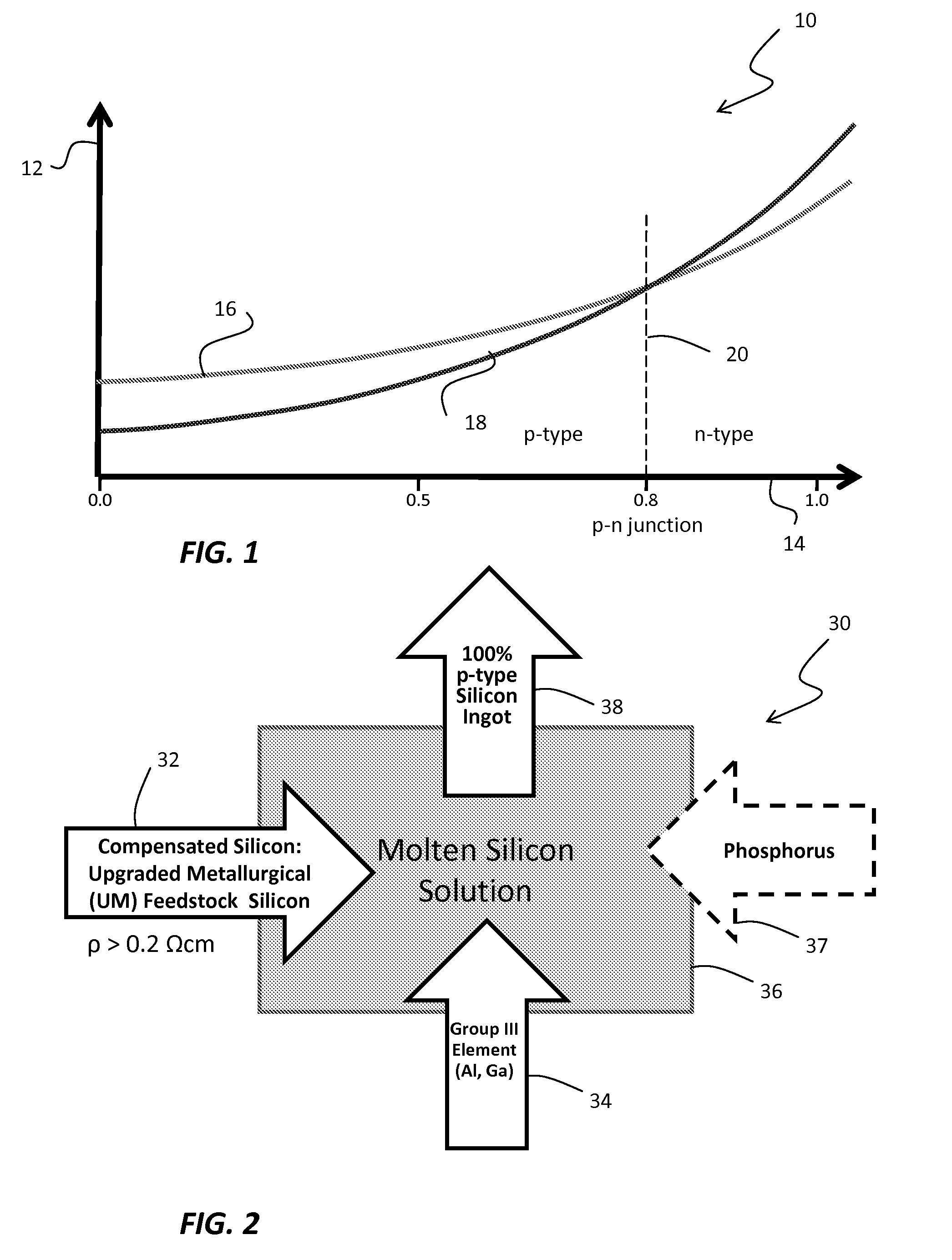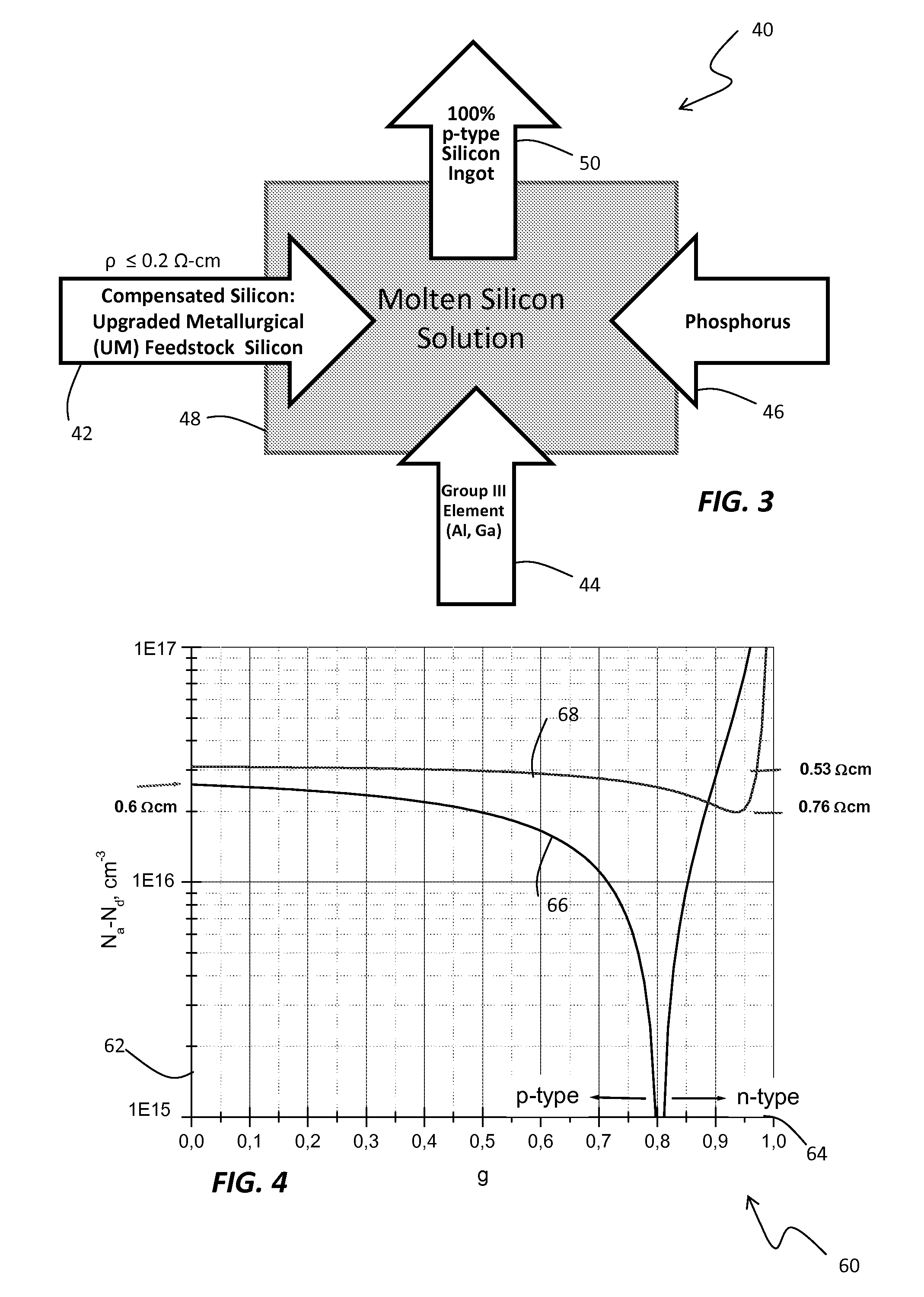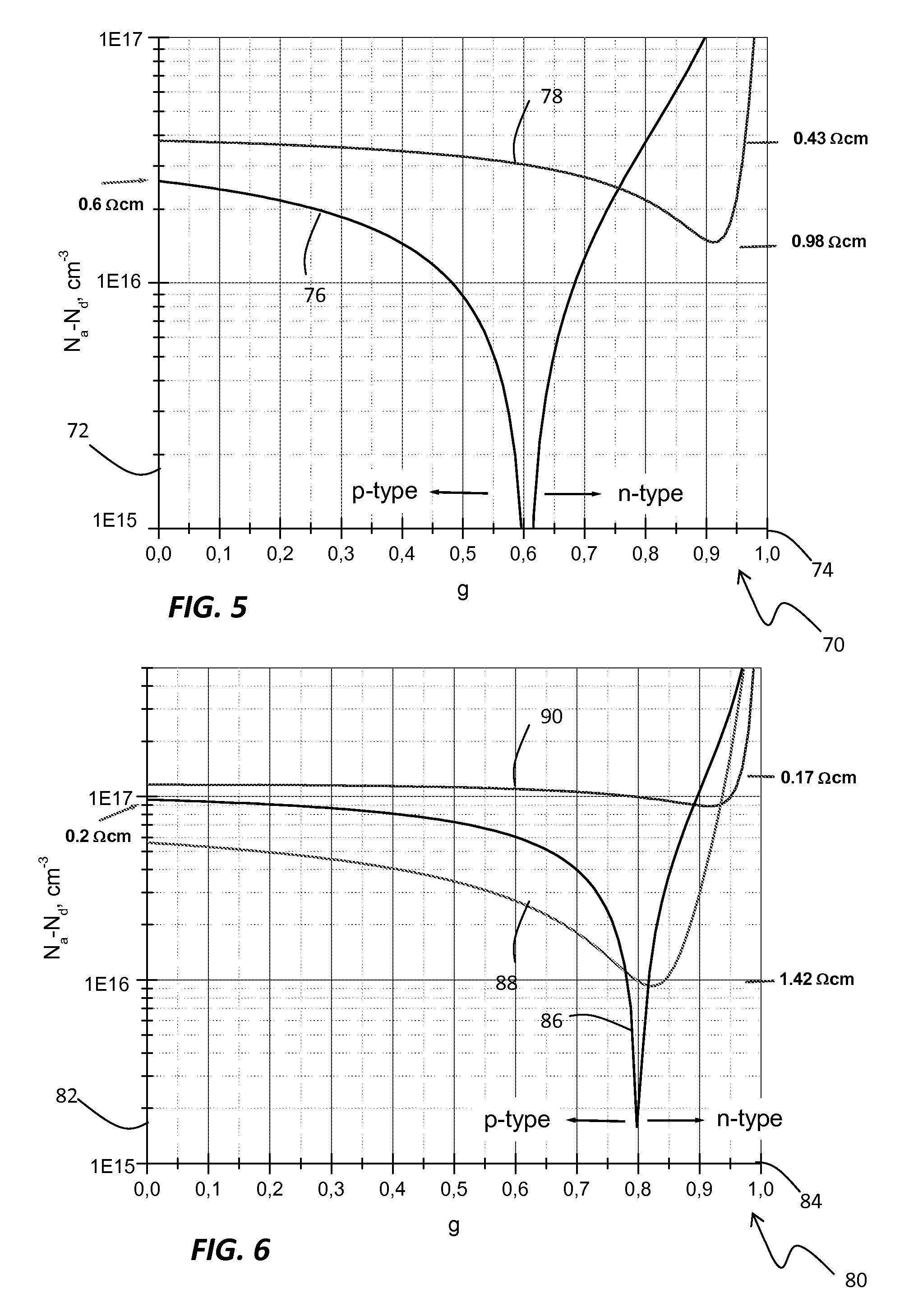Method and system for controlling resistivity in ingots made of compensated feedstock silicon
a technology of feedstock silicon and resistivity, which is applied in the direction of silicon compounds, conductors, and under a protective fluid, can solve the problems of eg, mg silicon typically failing to produce working solar cells, and the silicon needs usable for solar cells are not likely to be satisfied by mg or other silicon producers using known processing techniques, and achieve the effect of improving performance/cost ratio
- Summary
- Abstract
- Description
- Claims
- Application Information
AI Technical Summary
Benefits of technology
Problems solved by technology
Method used
Image
Examples
Embodiment Construction
[0022]The method and system of the present disclosure provide a semiconductor ingot formation process for producing a multi-crystalline silicon ingot. As a result of using the disclosed subject matter, an improvement in the properties of low-grade semiconductor materials, such as upgraded, partially purified metallurgical silicon occurs. Such improvement allows, for example, the use of UM-Si in producing solar cells as may be used in solar power generation and related uses. The method and system of the present disclosure, moreover, particularly benefits the formation of solar cells using UM or other non-electronic grade feedstock silicon materials, but can be used for electronic grade feedstock silicon too.
[0023]Directional solidification (DS) leads to characteristic axial distribution of impurities (I), controlled by impurity-specific segregation characteristics. The so-called segregation coefficient S that describes segregation characteristics is described by the following simplif...
PUM
| Property | Measurement | Unit |
|---|---|---|
| resistivity | aaaaa | aaaaa |
| resistivity | aaaaa | aaaaa |
| resistivity | aaaaa | aaaaa |
Abstract
Description
Claims
Application Information
 Login to View More
Login to View More - R&D
- Intellectual Property
- Life Sciences
- Materials
- Tech Scout
- Unparalleled Data Quality
- Higher Quality Content
- 60% Fewer Hallucinations
Browse by: Latest US Patents, China's latest patents, Technical Efficacy Thesaurus, Application Domain, Technology Topic, Popular Technical Reports.
© 2025 PatSnap. All rights reserved.Legal|Privacy policy|Modern Slavery Act Transparency Statement|Sitemap|About US| Contact US: help@patsnap.com



